Dealing with a busted pipe is a headache most homeowners encounter at some point. Repair costs swing wildly across the country, and there’s rarely a neat answer.
On average, the cost to repair a burst pipe in the U.S. ranges from $150 to $2,000, depending on the location, pipe material, and severity of the damage. That’s a huge range, right? Understanding what drives those numbers can help folks brace themselves for the bill.
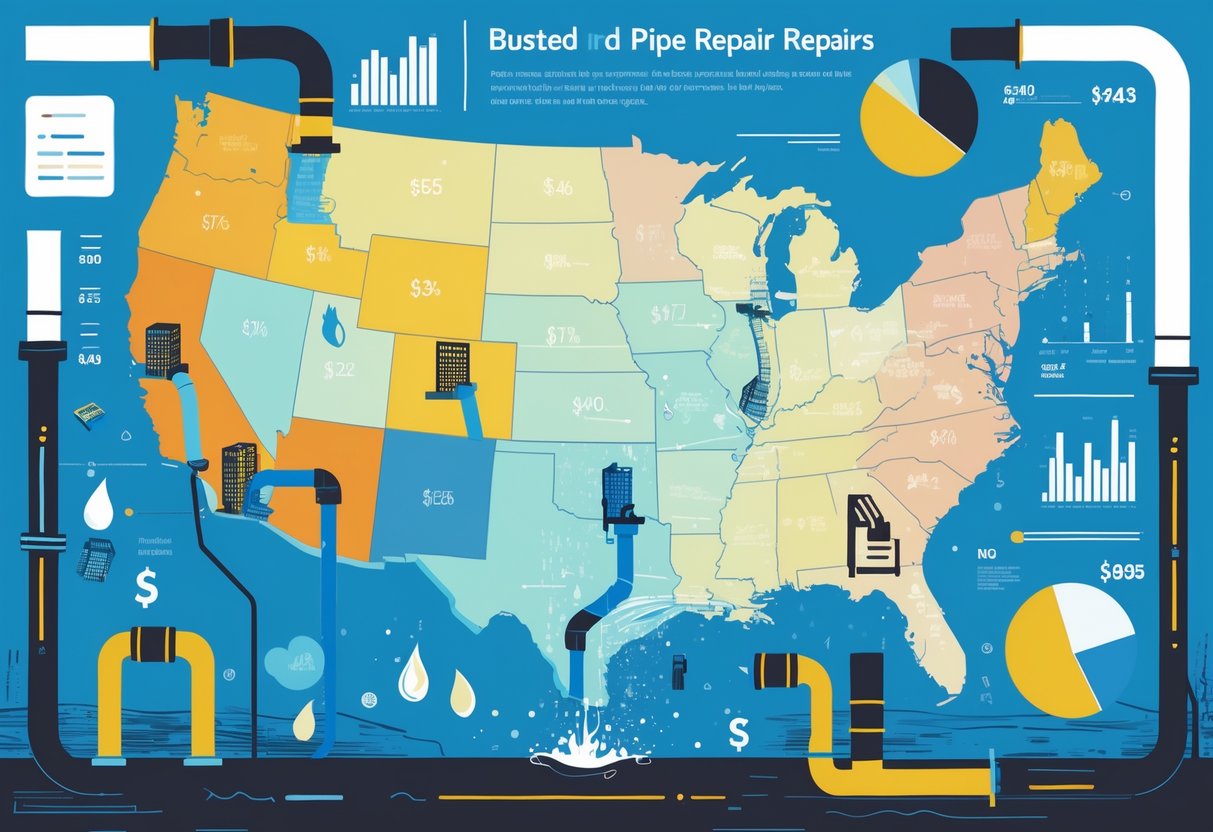
Busted pipes usually happen thanks to freezing temps, old pipes, or water pressure that’s out of whack. If you need emergency repairs—especially after hours—expect the price to jump. Sometimes insurance helps, but it’s not a sure thing.
Key Takeaways
- Busted pipe repair costs depend on damage, location, and type of pipe.
- Emergency services and insurance claims impact total expenses.
- Knowing common causes helps prevent future pipe issues.
Overview of Busted Pipe Repair Costs
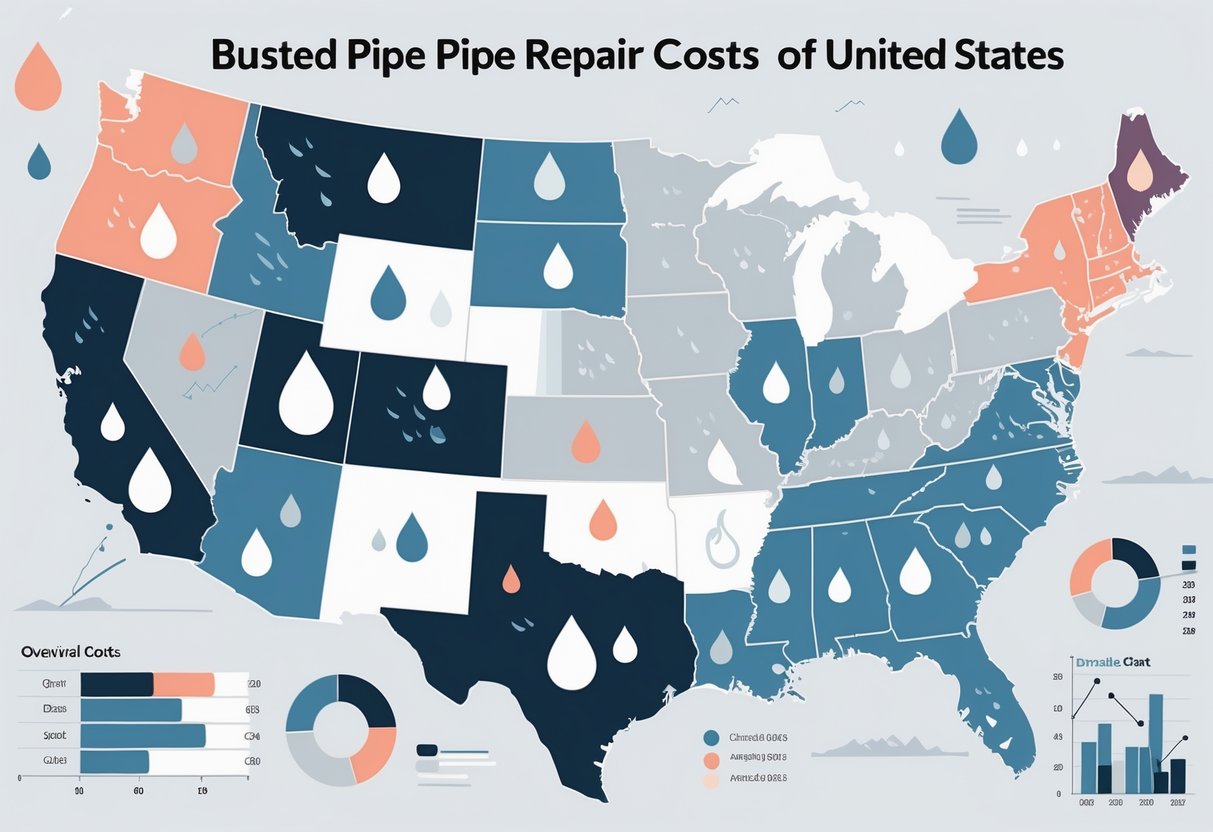
Fixing a burst pipe can cost anywhere from a few hundred bucks to a couple grand. Where you live and what your pipes are made of make a big difference.
Need a Home Fix – Emergency or Routine?
From leaks and no-heat nights to simple tune-ups, our 24/7 hotline connects you with trusted local pros in minutes.
National Average Cost of Burst Pipe Repair
In the U.S., the average cost to repair a burst pipe sits somewhere between $500 and $1,500. That usually covers both labor and materials.
Small fixes—like patching a short section—might only set you back $150. But if water damage is bad, or the pipe is hidden behind a wall, costs climb fast.
Need a plumber in the middle of the night? Emergency or after-hours repairs can bump prices up by 20% to 50% over the usual rate. Insurance sometimes helps if the break was sudden and accidental.
Most plumbers charge per linear foot for repairs. Labor is a big chunk of the final bill.
Price Range by Region
The price range for burst pipe repairs really depends on where you are. In the Northeast and West Coast, higher living costs mean higher plumbing rates.
Places like New York City or San Francisco? Repairs can easily top $2,000 because labor is pricey and old buildings make access tough.
Meanwhile, the Midwest and South usually see lower repair bills. Something that costs $1,200 in LA might only be $600–$900 in Dallas or Kansas City.
Rural spots can get cheaper labor and materials, but you might wait longer for a plumber to show up.
Regional price differences often come down to:
- How many people need plumbing help locally
- General cost of living
- How old the buildings are and how easy pipes are to reach
- How many licensed plumbers are around
Types of Pipes and Cost Impact
The type of pipe material changes the price too. PEX and PVC pipes are the cheapest to deal with—usually $3 to $7 per linear foot.
They’re flexible and quick to fix. Copper pipe repairs cost more, often $8 to $15 per linear foot, since copper is tougher and sometimes needs torch welding.
Old lead pipes are a whole other headache—expensive, hazardous, and sometimes they have to be fully removed by law. That gets pricey fast.
Other stuff that bumps up the cost? Bigger pipe diameters, tricky locations (like under concrete or in ceilings), and having to match old materials. Sometimes, switching to modern pipes saves money in the long run.
Factors Influencing Repair Costs
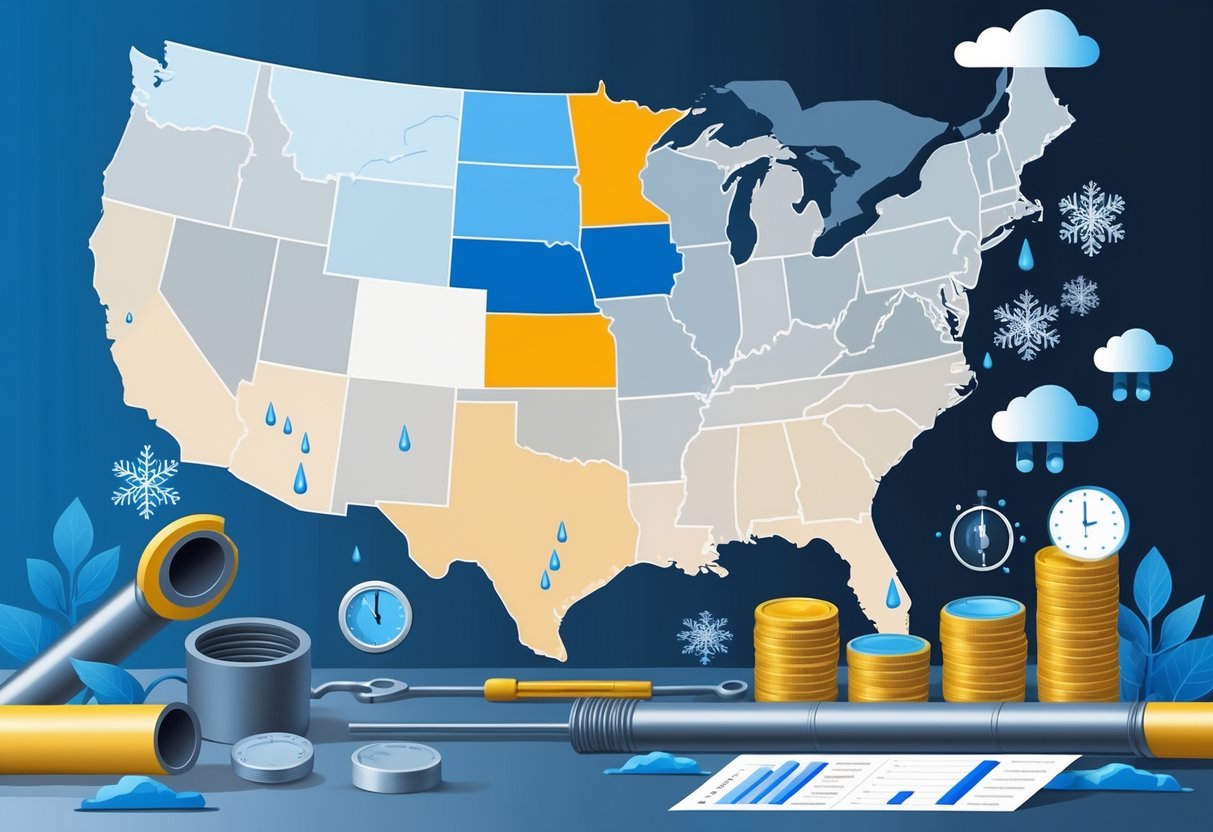
Repair costs for a burst pipe can swing a lot, depending on a handful of things. The size and type of damage, where the pipe is, what it’s made from, and how much water damage you’re dealing with all play a role.
Extent of Water Damage
The more water that escapes, the higher the bill. Flooded rooms, soaked drywall, and ruined floors all add up fast.
Common cost factors:
- Water extraction and drying: Professional drying can run between $1,000 and $4,000.
- Structural repairs: If drywall, floors, or ceilings are trashed, they’ll need replacing.
- Mold mitigation: Wait too long and mold sets in—removal is never cheap.
Small leaks might just need a mop and a fan. Bigger messes call for heavy-duty drying and repairs. Acting fast really helps keep costs down.
Pipe Location and Accessibility
Where the pipe is makes a difference. Pipes in basements or crawl spaces are easier (and cheaper) to fix.
Pipes hidden behind walls, under floors, or up in ceilings? Those are a pain. Plumbers might have to:
- Cut open walls or ceilings
- Move stuff out of the way
- Squeeze into tight spots
All that extra work means more hours and higher bills. Fixing a pipe behind a tiled bathroom wall, for example, costs more because of the demolition and patch-up work afterward.
Type and Material of Pipe
Pipe material matters a lot. Copper, PVC, PEX, and lead pipes all have their own price tags.
| Pipe Material | Average Repair Cost* |
|---|---|
| Copper | $150–$500 |
| PVC | $100–$300 |
| PEX | $100–$350 |
| Lead | $200–$700 (plus removal) |
*Estimates vary by region
Copper pipes last longer but cost more to fix. PVC and PEX are cheaper and quicker to work with, but maybe not as tough. Lead pipes are expensive, and sometimes you’re forced to replace the whole thing by code.
Severity and Type of Damage
How bad is the break? Tiny pinhole leaks might just need a clamp or patch.
Bigger ruptures—especially from frozen pipes or major pressure spikes—usually mean replacing whole sections. If the pipe bursts in more than one spot, you’re looking at more time and more money.
Frozen pipes sometimes split along their length, which can be tricky to spot. High pressure can slowly weaken joints until they finally give out. Plumbers have to decide if a quick fix is enough or if more needs to go. More damage always means a bigger bill.
Common Causes of Burst Pipes
Burst pipes are a pain, and the repair costs can sting. The usual culprits? Freezing weather, high water pressure, old or worn-out pipes, and clogs that jack up pressure inside the plumbing.
Frozen Pipes and Thawing Methods
Frozen pipes are a big problem in cold places. Water freezes, expands, and the pressure can split the pipe. Copper and lead pipes are especially at risk.
When a pipe bursts from freezing, it can ruin walls, floors, and your stuff. To avoid it, insulate pipes in cold spots like basements or attics. Letting faucets drip a little during cold snaps can keep water moving and help prevent freezing.
If pipes do freeze, thawing needs a gentle touch. A hair dryer, heating pad, or warm towels can help. Never use an open flame—seriously, it’s dangerous. For tough cases, call in a pro.
Water Pressure Issues
High water pressure is another sneaky cause. Home pipes are built for 40 to 60 psi. Go much higher and joints or weak spots can burst.
If you hear banging in the pipes or notice frequent leaks, check the pressure with a gauge. Installing a pressure-reducing valve is a smart move if your pressure’s too high.
High pressure breaks tend to be sudden and messy. Checking pressure regularly and keeping it in the safe zone helps a lot.
Aging and Deteriorating Pipes
Pipes get old and cranky like the rest of us. Lead and older copper pipes are most likely to fail. Corrosion, rust, and mineral deposits slowly eat away at the walls.
Homes built before the 1970s might still have lead pipes, which are risky for both bursts and health. Even copper pipes can split or corrode over decades.
Regular inspections help catch issues early. Look for wet spots, stains, or a sudden drop in water pressure. Swapping out old pipes during renovations is a smart long-term fix.
Clogged Drains and Blockages
Clogs build up pressure behind the blockage. If water can’t move, it’ll find the weakest spot—and that’s where you’ll get a burst.
Main sewer lines, kitchen sinks, and bathroom drains are all trouble spots. Tree roots, grease, hair, and things that shouldn’t be flushed are common offenders.
A sewer line burst is the worst—messy, hazardous, and expensive. Watch for slow drains, gurgling sounds, or weird smells. Regular cleaning and not flushing junk down the drain go a long way. For bad clogs, a plumber with the right gear is your best bet.
Emergency Plumbing and Service Costs
Emergency plumbing for a burst pipe isn’t cheap—especially if you need help right away. What you pay depends on parts, labor, and extra fees for late-night or weekend calls. It’s worth knowing what you’re in for before you dial.
Emergency Plumbing Services Breakdown
When a pipe bursts, you’ll probably need emergency plumbing services. These cover immediate repairs, shutting off water, and damage control.
The price for a plumber on short notice? It’s almost always higher than for regular, planned service.
A basic visit for emergency plumbing usually includes:
- Initial inspection and leak detection
- Temporary fixes to stop water flow
- Permanent pipe repair or replacement
- Cleanup of water and debris
Typical cost ranges for emergency burst pipe repair:
| Service Level | Average Cost |
|---|---|
| Minimum service fee | $150 – $250 |
| Pipe repair (simple) | $200 – $500 |
| Full pipe replace | $500 – $1,500 |
Free estimates for emergencies? Honestly, not common. Some plumbers might toss out a quick price range over the phone, but expect the total to climb if special parts or extra time are needed.
After-Hours and Holiday Rates
Calling after hours or on a holiday? Yeah, you’ll pay more. Emergency fees can push the bill 1.5 to 2 times higher than standard rates.
Key factors that impact after-hours rates:
- Time of day: Calls after 5 p.m. or before 8 a.m. cost more.
- Holidays and weekends: Surcharges from $100 to $300 get tacked on.
- Severity of the problem: Major, urgent leaks bump up the price.
Most companies will give you a ballpark price before they come out, but it can change once they see the burst pipe. It’s smart to ask for clear pricing before saying yes to emergency service.
Insurance Coverage and Claims
Homeowners insurance often helps with repair costs after a pipe bursts. But the details—what’s covered, how claims work—can really change what you pay out of pocket and how fast things get fixed.
Assessing Homeowners Insurance Policies
Most policies include coverage for sudden and accidental water damage from busted pipes. Not everything is covered, though.
Damage from neglect or poor maintenance is usually not included. If a pipe freezes and bursts because the house wasn’t heated, for example, coverage might be denied.
It’s worth digging into the policy’s “perils covered” section to see what’s actually protected. Typical policy sections about plumbing failures list covered events, deductibles, and payout limits.
Policyholders should compare their deductible to the cost of the repair before deciding to file a claim.
Filing an Insurance Claim
After a pipe bursts, act fast. Shut off the main valve to stop the water.
Then, document everything—snap photos, make a list of damages. Contact your insurance company as soon as you can to start the insurance claim.
Be ready with evidence of damage, repair costs, and what you did to prevent more water damage. Keep all your receipts and notes from calls or emails.
The insurance company may send an adjuster to check out the damage. After that, they decide the payout. Some policies want you to get approval before making repairs, unless it’s an emergency.
What Insurance Typically Covers
Insurance usually covers repair costs for the damaged pipe and water damage to floors, walls, and ceilings. Coverage often includes:
- Drying and cleanup services
- Structural repairs to affected areas
- Some replacement of damaged personal property
But it usually does not cover the cost to repair the pipe itself unless the break was sudden and accidental. Damage from slow leaks or lack of maintenance is generally excluded.
Table: Typical Coverage for Busted Pipe Claims
| Coverage Area | Usually Covered | Not Covered |
|---|---|---|
| Water Damage (sudden burst) | ✅ Yes | |
| Cost to Fix the Pipe | Sometimes | If neglect is found |
| Damage from Poor Maintenance | ❌ No | |
| Drying/Cleanup | ✅ Yes | |
| Gradual Leak Repair | ❌ No |
Repair Process for Burst Pipes
Repairing a burst pipe means acting quickly to keep water damage down and costs under control. The process starts with an assessment, then the plumber decides between repairing or replacing the pipe.
Each step can affect the final cost and how long you’ll be without water.
Initial Steps and Damage Assessment
When a pipe bursts, immediate action is key. First, shut off the water main to stop more leaks.
Then, call a plumber for a professional inspection. The plumber checks for soaked walls, floors, or ceilings.
Insurance companies usually want photos or notes about repairs. Here’s what you should do:
- Turn off water supply
- Move stuff away from wet spots
- Contact a plumber
- Document all damage
Plumbers might use moisture meters or thermal cameras. A full assessment helps decide if the damage goes beyond just the pipe.
Costs can rise if you need water extraction or drying services for widespread damage.
Pipe Replacement vs. Repairing a Burst Pipe
The plumber figures out if a simple repair is enough or if a full pipe replacement is needed. Small cracks or pinhole leaks can sometimes be patched with a clamp or epoxy.
This is usually faster and cheaper. But when is replacement the only way?
- If the pipe is old or corroded
- There are severe or long cracks
- Multiple breaks in the same line
Pipe replacement means cutting out the damaged section and putting in new piping. This costs more because of labor and materials.
Table: Typical Repair Choice Factors
| Issue | Likely Solution |
|---|---|
| Small leak | Repair |
| Major crack | Replacement |
| Corrosion | Replacement |
| Newer pipes | Repair possible |
Deciding between repair and replacement depends on the age and condition of the pipes, material, and how bad the break is. If the plumber has to open up floors or walls, costs go up fast.
Special Cases: Sewer Line and Sprinkler System Repairs
Repair costs can get pretty steep when it’s a sewer line or outdoor sprinkler system. These need different materials, more labor, and often special equipment.
Sewer Line Repair Costs
Sewer line repairs almost always cost more than fixing pipes inside the house. Why? Sewer lines are underground—digging up a yard or breaking through concrete isn’t cheap.
Most homeowners pay between $1,500 and $4,000 for sewer line repairs. If the problem’s under a driveway or a big tree, expect even higher bills.
The price depends on pipe length, depth, soil type, and repair method. Trenchless repairs are less messy but can cost more per foot than digging. Some jobs take several days. Permits and city inspections can add to the total.
Typical Sewer Line Repair Costs:
| Repair Method | Average Cost* | Notes |
|---|---|---|
| Traditional Dig | $1,500 – $4,000 | Most common method |
| Trenchless | $2,500 – $7,000 | Less mess, more expensive |
| Spot Repair | $750 – $2,000 | Small damaged sections only |
*Prices vary by city and pipe condition.
Sprinkler System Pipe Repairs
Fixing a broken sprinkler system pipe is usually less painful for your wallet than sewer line work. Most sprinkler repairs run between $150 and $500.
The price depends on pipe type, how deep it’s buried, and the size of the damaged area. Sprinkler repairs often come up because of freeze damage, roots, or just old age.
Quick fixes matter—they help prevent water waste and keep your landscaping happy. Labor usually takes less than a day, and honestly, a lot of homeowners can tackle small repairs themselves.
Here’s what you might pay for sprinkler pipe repairs:
- Replacing a small section of pipe: $100 – $250
- Fixing several leaks or damaged zones: $250 – $500
- Valve or control repair: $75 – $200
Hiring a pro lowers the risk of mistakes, but some folks grab a DIY kit to save money if the damage is minor.
Additional Costs and Considerations
Busted pipe repairs can lead to more headaches than just fixing the plumbing. Costs can balloon because of water damage, mold, and cleanup needs.
Mold Remediation and Water Damage Restoration
Water from a broken pipe soaks into walls, floors, and ceilings. If it stays wet, mold can start growing in 24 to 48 hours.
Mold removal needs special cleaning—it’s not part of standard plumbing repairs. Mold remediation usually costs $500 to $6,000, depending on how much of your house is affected.
Water damage restoration goes further than just drying things out. It might mean tearing out drywall, replacing floors, and treating areas to keep mold from coming back.
Restoration crews use fans, dehumidifiers, and cleaning supplies. That can add hundreds or thousands to your bill.
Acting quickly really does help limit mold and keep costs down.
Key points:
- Mold remediation: $500–$6,000+
- Water damage restoration: Often $1,000–$5,000+
- Fast response lowers risk and cost
Long-Term Maintenance and Prevention
After a repair, it makes sense for homeowners to think about preventing more problems down the road. Regular plumbing inspections are a smart move, since they can catch leaks before things get messy.
Most inspections run between $100 and $400 each time. It’s not exactly pocket change, but it’s a lot less than dealing with a flood.
Some folks go further by installing leak detectors or swapping out old pipes. Sure, these upgrades can cost more upfront, but they really do help cut down on future water disasters.
Leak detectors usually run $20 to $100 each. You can pop them under sinks or near water heaters—wherever you’re worried about leaks.
Replacing pipes gets expensive fast. The bill depends on your home’s size and how ancient your plumbing is, but it can be a few thousand dollars if you’re unlucky.
List of preventive actions:
- Annual plumbing inspections
- Installing leak detection devices
- Replacing aging or damaged pipes
Frequently Asked Questions
Pipe repair costs are all over the place. It really depends on where you live, where the pipe burst, and what kind of fix you need.
Labor, materials, and how bad the damage is will all change the price.
What is the average expense for repairing a subterranean water pipe?
Repairing a subterranean (underground) water pipe usually runs between $500 and $3,000. The price climbs if you need digging or heavy machinery.
Longer or deeper pipes? That’s going to cost more, no way around it.
What are the costs associated with fixing a pipe that has burst within a wall?
Fixing a burst pipe inside a wall is typically $150 to $800. That includes tearing out drywall, fixing the pipe, and patching things up afterward.
It’s easier—and cheaper—if the pipe is easy to reach. Materials matter too.
Can you detail the expected costs for repairing a burst pipe outside a house?
Repairing a burst pipe outside a house generally costs $200 to $1,500. The distance from the house, how deep the pipe is, and whether you need big equipment all play a role.
What are the financial implications of repairing a leaky pipe beneath a home?
Fixing a leaky pipe under your house can set you back $500 to $2,500. If the crawl space is tiny or tough to get into, expect higher labor costs.
That price usually covers both fixing the leak and any water damage cleanup.
What are the typical costs for rectifying a ceiling pipe leak?
Ceiling pipe leaks usually cost $200 to $1,000 to repair. That includes patching up drywall or ceiling tiles after the pipe’s fixed.
The final bill depends on where the leak is and how much damage it caused. Sometimes, you just never know until you open things up.
How does the severity of winter affect the repair costs for frozen and burst pipes?
When winter gets really harsh, repair costs for frozen or burst pipes can shoot up. If you live somewhere that gets bitterly cold, you might be looking at bills between $1,000 and $3,000.
That’s mostly because pipes take a bigger beating, and emergency plumbers tend to charge more when it’s freezing out. Sometimes you’ll also need to add extra insulation just to keep things from freezing again.

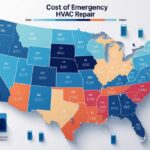



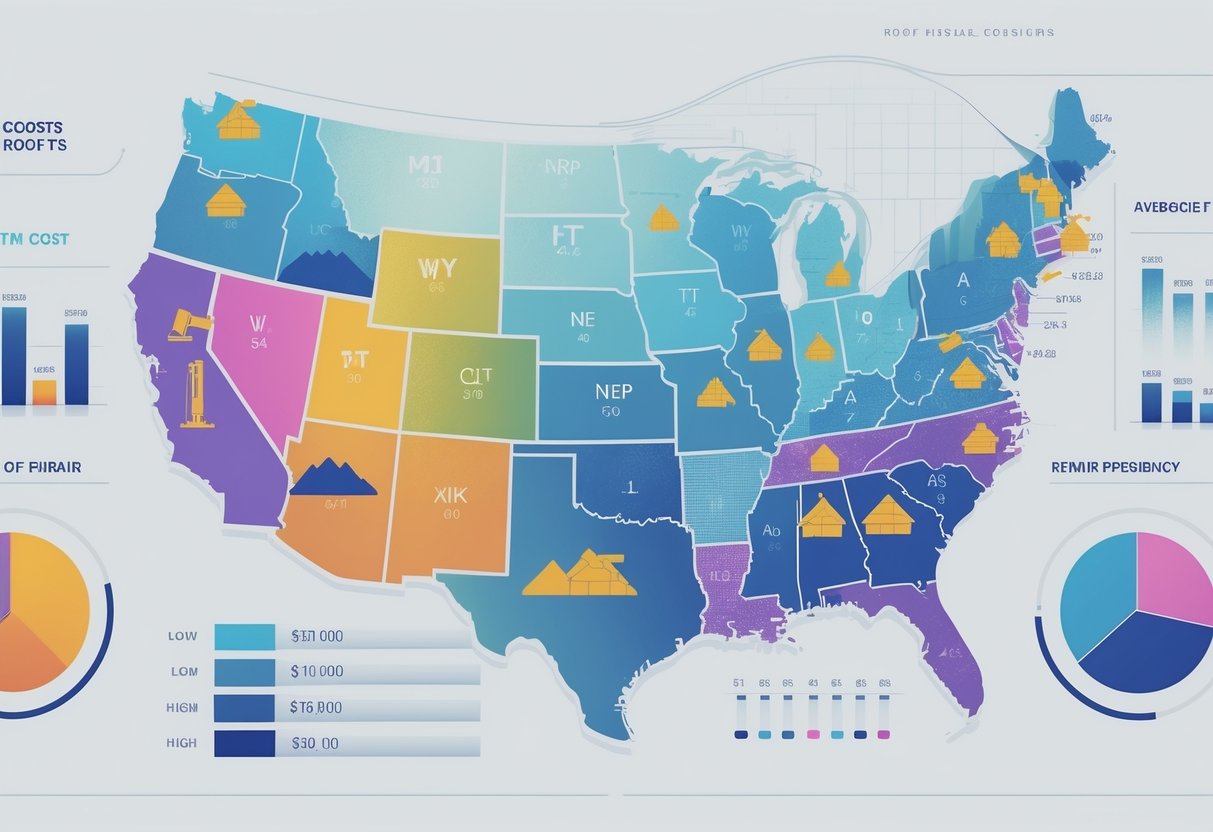

Leave a Reply